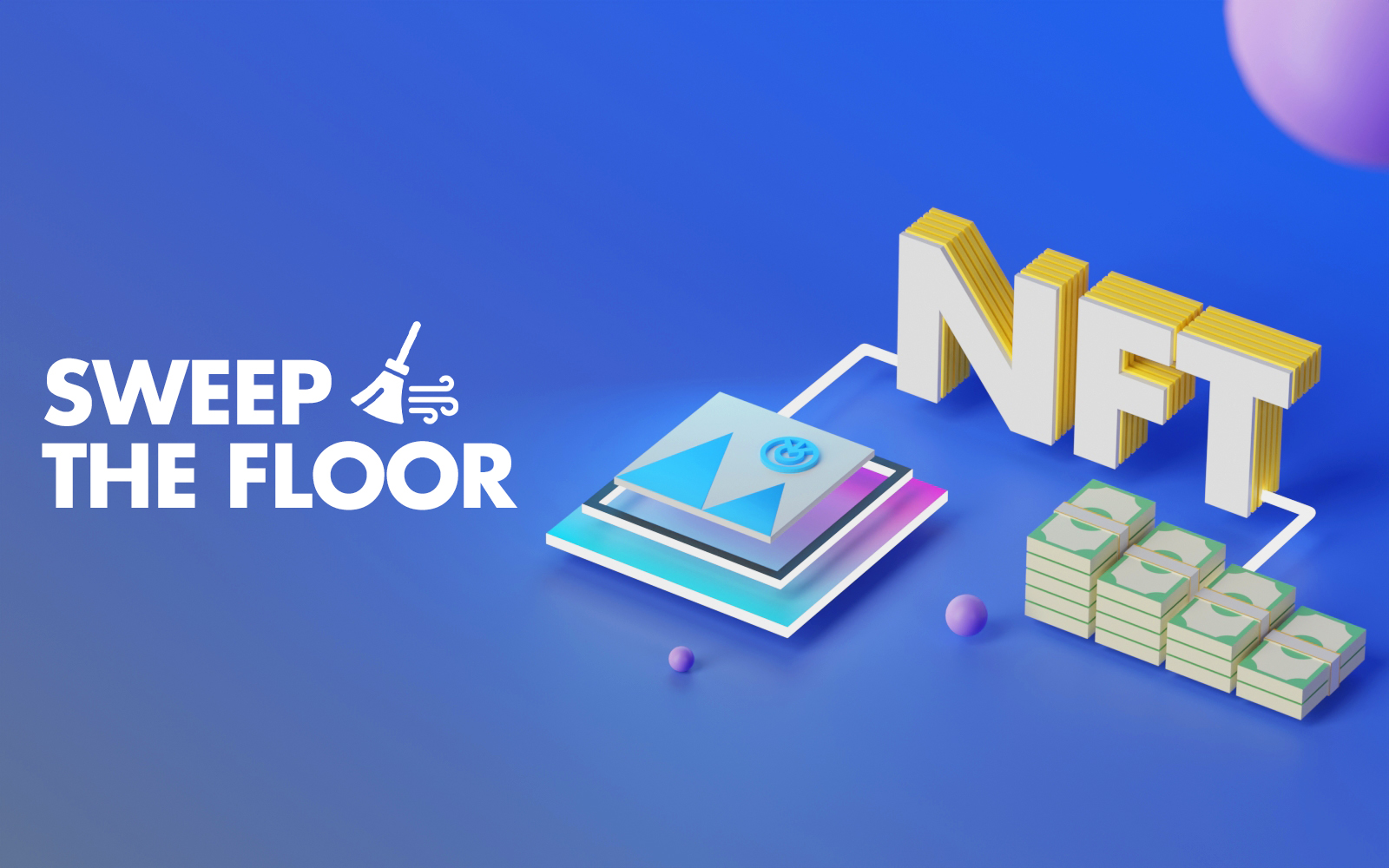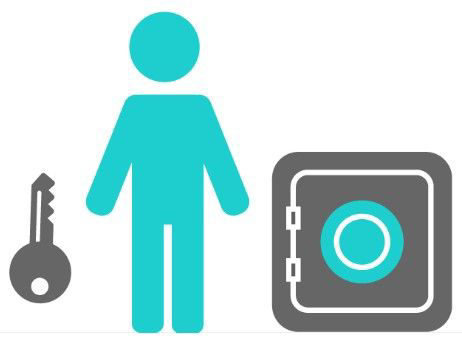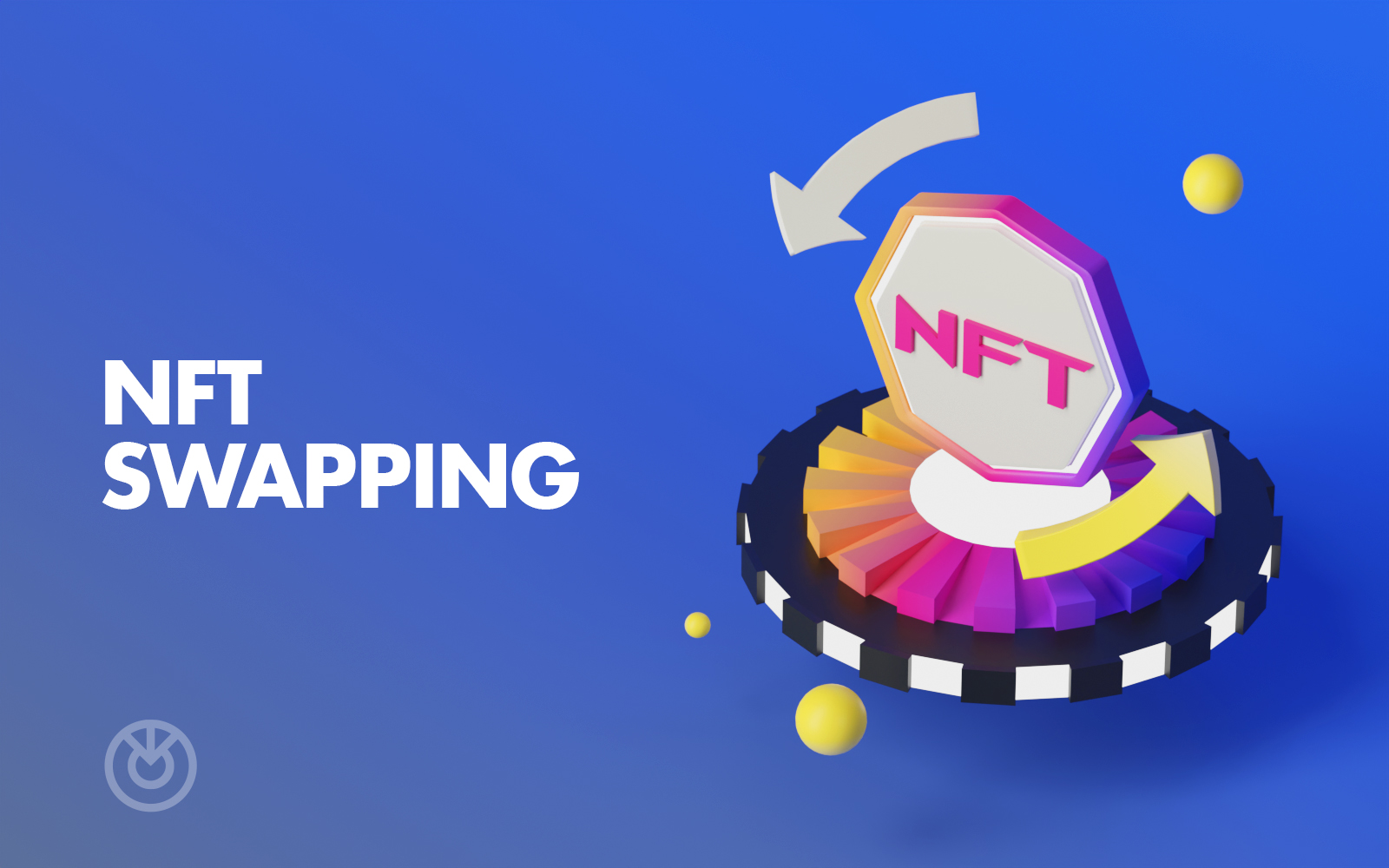It is called the Crypto renaissance, redefining ownership!
It is from pixels to blockchain, exploring the power and potential of digital ownership
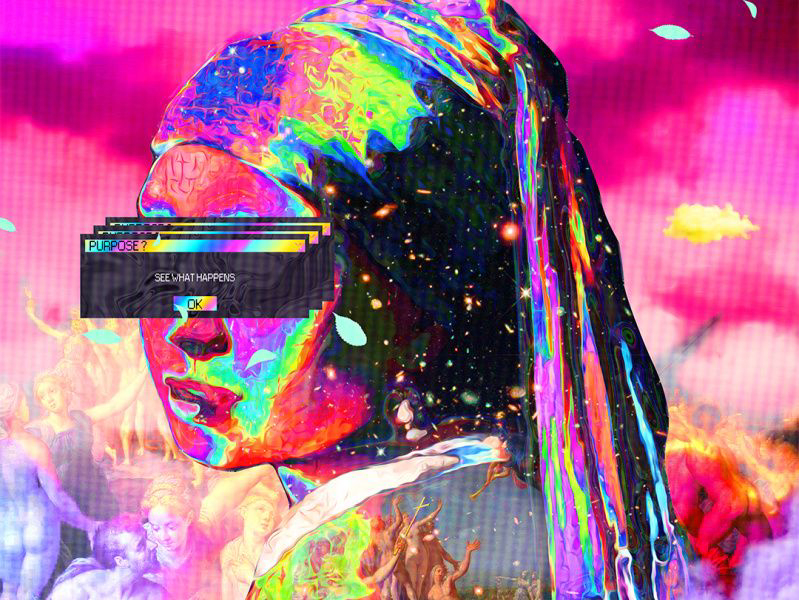
In the vast and ever-evolving landscape of the digital era, a shift is taking place.
A revolution that challenged the very foundations of how we perceive and possess art, collectibles, and intellectual property. A revolution that challenged the essence of ownership and value.
It goes by the name of Non-Fungible Tokens (NFTs), a concept that has ignited a storm of innovation, transforming the way we perceive, collect, and interact with art, artworks, music, artists and, digital assets. In this article, we embark on a journey into the uncharted frontier of NFTs, where heavy waves of change, crash against the shores of tradition, and a perfect storm of possibilities emerges.
Imagine a world where the intangible is given tangible value, where ownership transcends the boundaries of physicality, NFTs have breathed life into this very concept. They have granted creators the power to tokenize (the process of converting something of value into a digital token that’s usable on a blockchain application, to substitute a generated identifier for (a sensitive piece of data) in order to prevent unauthorized access.) their unique works, infusing them with unprecedented scarcity and verifiable authenticity. Where artists can connect directly with their audience, bypassing traditional intermediaries, and where collectors can possess and trade digital assets with newfound confidence. This is the dream that has become true for artists with no voice.
What is NFT?
NFT, or non-fungible tokens, are unique assets that have been tokenized on a blockchain, giving them distinct identification codes and metadata. Unlike cryptocurrencies, which are interchangeable, NFTs cannot be freely exchanged on a one-to-one basis.
One of the clearest advantages of NFTs is their ability to enhance market efficiency. When a physical asset is tokenized, the sales process becomes streamlined, eliminating the need for intermediaries. By representing digital or physical artwork on a blockchain, NFTs enable sellers to directly connect with their intended audience, bypassing the requirement for agents (provided that artists possess the knowledge to securely host their NFTs).
The value of NFTs are determined by market demand and individual preferences, allowing them to be bought, sold, and traded for money, cryptocurrencies, or other NFTs.
(For more info about NFT Marketplace check this article.)
Below, there are other pros and benefits you can get to know more.

Glossary
White Paper: A document that provides detailed information about a specific NFT project or platform. It typically outlines the project’s goals, technology, underlying blockchain infrastructure, tokenomics, roadmap, team members, and any other relevant details. It serves as a comprehensive guide for investors, developers, and community members to understand the project’s vision, features, and potential impact. The white paper is crucial for transparency and establishing credibility. It allows interested individuals to assess the viability and legitimacy of the NFT project. Investors can evaluate the project’s potential for success, developers can understand the technical aspects, and the community can gain insights into the project’s objectives and roadmap.
Tokenomics: How tokens are created, distributed, and used within a specific NFT system, including factors like supply, utility, rewards, and governance. It influences the value and functionality of the NFT project.
Roadmap: A roadmap outlines the planned milestones, goals, and development stages of a project over a specific timeframe. It provides a visual representation of the project’s future plans and the steps required to achieve those objectives. The roadmap may include details about upcoming features, platform upgrades, collaborations, and other significant events related to the project’s growth and development.
Whitelist: A list of individuals or addresses that are granted permission or priority access to participate in a specific event or sale. In the NFT space, whitelisting is often used to manage limited edition releases, exclusive drops, or private sales. Whitelisted participants have the opportunity to purchase or acquire NFTs before they become available to the general public. Whitelisting adds exclusivity and fairness to NFT events or sales. It allows project teams to prioritize certain individuals or communities that have demonstrated interest or support for the project. Whitelisting can help manage high demand, prevent scalping or bot activity, and reward dedicated community members or early adopters with special access. It also provides a controlled environment for initial sales, ensuring a smoother experience for participants.
Airdrop: An NFT airdrop refers to the distribution of NFTs to a group of recipients for free. It is often used as a promotional or marketing strategy by NFT projects to increase awareness, engage the community, or reward loyal supporters. Airdrops can help generate interest and create a sense of value for the distributed NFTs.
Minting: Minting an NFT transforms digital art into verifiable tokens on the blockchain, establishing ownership and enabling future tracking, resale, and collection. It involves integrating digital artwork into the transparent and immutable public ledger, similar to creating physical coins, marking the token’s entry into circulation.
Gas Fee And Its Role In NFT Minting And Transactions: When minting an NFT, it’s important to consider gas fees. Gas fees are payments made in cryptocurrency to cover the computing energy needed for processing and validating the transaction on the blockchain. These fees ensure a smooth and secure minting process for your NFT within the overall ecosystem of their transactions.

NFT Pros:
- Anyone can invest in NFTs
- NFT ownership is protected by blockchain technology
- Opportunity to learn about blockchain technology
- Artists can express their creativity and make money
- NFT ownership can be verified and proves authenticity
- Content creators can earn income from their work
- Engage and interact with creators and communities
- NFTs offer potential for easy buying, selling, and trading
- Preserve and protect digital art and culture
- NFTs can support charitable causes
Reasons to purchase nft
- Ownership and Exclusivity: Buying an NFT means you get to be the proud owner of something truly unique in the digital realm. It’s like having a one-of-a-kind piece that nobody else can claim as their own.
- Supporting Creators: When you buy an NFT, you’re not just getting a digital asset, you’re also supporting the talented artists, musicians, creators, and all the hard work behind it. It’s a direct way to show love and appreciation for their work, while helping them earn a living doing what they love.
- Potential Investment: Now, some people see NFTs as a potential investment opportunity. They believe that certain NFTs, especially those associated with popular artists or limited editions, may increase in value over time. Just like collecting rare items, antiques, etc There’s a chance for some serious growth in your digital collection.
- Access to Exclusive Content: When you own an NFT, you might score special perks or exclusive content from the creators themselves. It could be exclusive artwork, backstage passes to virtual events, or even a chance to meet your favorite artists. It’s like being part of an exclusive club!
- Collectability and Rarity: NFTs are perfect for those who love to gather unique and rare items. With NFTs, you can curate a digital collection that’s totally your own. It’s all about finding those special pieces that resonate with you and showcasing them in your digital gallery.
- Participating in Virtual Economies: Here’s where it gets really interesting. Some NFTs exist within virtual worlds or gaming ecosystems, where they become valuable in-game assets or even a form of digital currency. Imagine owning virtual land or unique in-game items that can be bought, sold, and traded within a thriving virtual economy. It’s like having a whole new world at your fingertips.

NFT Use Cases
- Art and Collectibles
- Gaming and Virtual Worlds
- Music and Entertainment
- Collectibles and Trading Cards
- Virtual Identities and Virtual Goods
- Real-World Assets and Tokenization
- Charitable Donations : Making difference with NFT donations
- Event Tickets and Access
- Virtual Land and Metaverses
- Virtual Reality (VR) Experiences
Suitable For Artists
NFTs offer several advantages for artists, making them a compelling option in the digital era. Here are some reasons :
- Direct Control and Ownership: NFTs enable artists to have direct control over their creations and establish ownership through blockchain technology. This eliminates the need for intermediaries, such as galleries or agents, allowing artists to maintain more autonomy and retain a larger portion of the profits.
- Royalties on Secondary Sales: Unlike traditional art sales, where artists often receive a one-time payment, NFTs provide the opportunity for artists to earn ongoing royalties on secondary sales. Whenever an NFT is resold in the secondary market, the artist can receive a percentage of the sale, ensuring a potential source of passive income.
- Verifiable Authenticity and Scarcity: NFTs provide a way to verify the authenticity and provenance of digital artworks. Each NFT is uniquely identified and traceable on the blockchain, creating a transparent and tamper-proof record of ownership. Additionally, artists can create limited editions or unique pieces, adding scarcity and value to their works.
- Direct Engagement with Collectors: NFTs allow artists to directly engage with their audience and collectors. Through NFT marketplaces and social media platforms, artists can interact with fans, share their creative process, and build a dedicated community around their work. This direct connection fosters a deeper relationship between artists and their supporters.
- Global Reach and Accessibility: NFTs transcend geographical boundaries, allowing artists to reach a global audience with their digital creations. Online platforms and marketplaces provide instant access to artworks, eliminating the limitations of physical exhibitions or local art scenes. This expanded reach opens up new opportunities for exposure and potential sales. NFTs also offer portability, as they can be transferred seamlessly between different platforms and wallets, providing artists with flexibility and convenience.
- Preservation and Portability: Digital artworks stored as NFTs can be easily preserved, displayed, and shared digitally, without the concerns of physical deterioration or limited display space.
The comparison table on NFT Artists and Traditional Artists
| Aspect | NFT Artists | Traditional Artists |
| Art Medium | Digital, often created on a computer or other digital devices | Physical, created using traditional art |
| Distribution | Sold directly on NFT marketplaces or through online platforms | Exhibited in galleries, sold through art galleries, auctions, or agents |
| Ownership | NFTs provide verifiable ownership and provenance through blockchain technology | Ownership and provenance are established through certificates, documentation, or proven track record |
| Royalties | Artists can earn ongoing royalties on secondary sales of their NFTs | Royalties may not be automatically guaranteed for secondary sales |
| Accessibility | Global audience, instant access to art through online platforms | Physical artworks may be limited in availability and require physical presence |
| Authenticity | NFTs are digitally signed and traceable on the blockchain, ensuring authenticity | Authenticity may rely on signatures, certificates, or authentication processes |
| Digital Preservation | Digital artworks can be easily stored, displayed, and preserved digitally | Physical artworks require proper storage, handling |
| Interactivity | NFTs can include interactive elements, animation, or programmable features | Interaction with traditional artworks limited to viewing and physical engagement |
| Value Determination | Value based on market demand, scarcity, and artist reputation | Value influenced by factors such as artist reputation, historical significance, and critical reception |
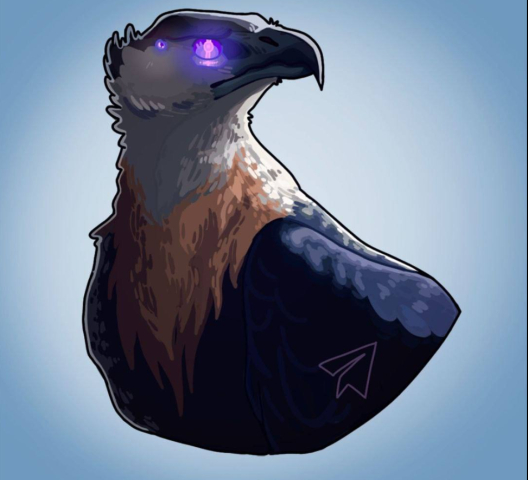
Where to buy? (Markets)
There are 3 different and main markets that you have to be familiar with before purchasing:
- Primary : Primary and secondary markets differ in securities, pricing, risk, volume, liquidity, timeframe and more. Marketplaces in the context of NFTs are online platforms where NFTs are bought, sold, and traded. They provide a space for creators and collectors to interact, list NFTs for sale, and facilitate secure transactions.
The primary market for NFTs refers to the initial sale or release of newly minted NFTs directly by the creators or authorized entities. In this market, artists, creators, or projects launch their NFTs for the first time, making them available for purchase by collectors and investors. The primary market is where NFTs are typically sold at their original price, set by the creator or project, often through platforms or marketplaces dedicated to NFT sales. - Secondary : The secondary market for NFTs refers to the marketplace where previously issued or purchased NFTs are bought, sold, and traded by collectors and investors. Once an NFT has been initially sold in the primary market, it can be resold or transferred to other individuals in the secondary market. This market operates similarly to traditional secondary markets, such as the stock market or art auctions, where ownership of assets is transferred between parties.
In the secondary market, the price of NFTs is determined by supply and demand dynamics, with collectors and investors setting their own prices based on perceived value. Secondary market platforms and marketplaces provide a venue for participants to list, discover, and transact with NFTs. Some platforms may also facilitate bidding, offers, and auctions for NFTs, allowing buyers to compete for ownership. - Marketplaces : (You can also check the complete explained articles on Marketplaces in our blog.)
Here’s a comparison table highlighting the differences between NFT marketplaces, primary market, and secondary market:
| NFT Marketplaces | Primary Market | Secondary Market | |
| Purpose | Facilitate buying, selling, and trading of NFTs | Initial sale of newly minted NFTs by creators or authorized entities | Resale and transfer of previously issued or purchased NFTs |
| Participants | Artists, collectors, investors, and users | Creators, artists, or projects launching NFTs | Collectors, investors, and individuals buying and selling NFTs |
| Availability | Open to the public | Exclusive to the project or authorized entities | Open to the public |
| Price Determination | Set by sellers or based on bids/offers | Set by creators or projects | Determined by supply and demand dynamics, negotiated between buyers and sellers |
| Ownership Transfer | Direct transfer of ownership between parties | Initial ownership transfer from creator to buyer | Subsequent ownership transfers between buyers |
| Value Potential | Opportunities to discover and acquire various NFTs | Potential to acquire NFTs at original price | Potential for price appreciation and profit through resale |
| Platform Examples | OpenSea, GetGems, Rarible, SuperRare | Platforms used by creators to launch their NFTs | Various secondary market platforms and marketplaces |
Overcome Scammers
While it’s important to approach any investment or involvement in NFT projects with caution and thorough research, there are certain attitudes and factors that may raise concerns or indicate a potential scam:
- Lack of Transparency: Scam projects often lack transparency regarding their team members, their intentions, or the specifics of their project. They may provide limited information, making it difficult to verify their credibility.
- Unrealistic Promises: If a project makes extravagant claims of guaranteed high returns or promises that seem too good to be true, it could be a red flag. Scammers often prey on people’s desire for quick profits, so it’s essential to remain skeptical of exaggerated claims.
- Poor Documentation or Whitepaper: Legitimate projects usually have well-documented whitepapers or project details that outline their goals, technology, and roadmap. A lack of comprehensive or coherent documentation may indicate a scam.
- Unverifiable Credentials: Authentic projects often have team members with verifiable credentials, such as a reputable professional background or previous successful ventures. Scammers may create fake profiles or provide misleading information about their expertise.
- Token Distribution and Ownership: In some scam projects, the token distribution may be skewed heavily towards the project creators or initial investors, leaving little opportunity for broader community participation or benefit.
- Lack of Community Engagement: A genuine project typically engages with its community, responds to inquiries, and provides regular updates. If there is minimal communication, unaddressed concerns, or an inactive community, it could be a sign of a scam.
- Copycat Projects: Scammers may attempt to mimic legitimate projects, utilizing similar branding or copying whitepapers, in an effort to deceive potential investors. It’s crucial to conduct thorough due diligence to distinguish between original projects and scams.
- Ponzi or Pyramid Structures: Scam projects may operate under Ponzi or pyramid structures, where early investors are paid with funds from new investors rather than from the project’s actual success or revenue streams. These unsustainable models eventually collapse, causing financial harm to latecomers.
- Fake Partnerships or Endorsements: Scammers may fabricate partnerships or endorsements from well-known individuals or organizations to gain credibility. It’s crucial to verify the legitimacy of these partnerships through official channels or independent sources.
All in all,
It’s a fascinating space with endless possibilities. Just remember, to DYOR (do your research), follow your passions, and have fun exploring the world of NFTs!


